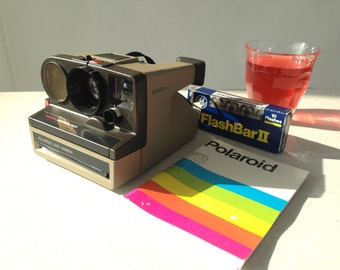Fujica Single 8 P1 Manual Meat
Contents.Details Although the film is thinner, the other dimensions of Single-8 such as the sprocket holes and sound track, are the same as. Single-8 can be projected in Super 8 projectors and vice versa. Single-8 comes pre-loaded in B-shaped cartridges, with two separate spools unlike the coaxial system of Super 8.
As a result, Single-8 film offered unlimited rewind, whereas Super 8 rewind was limited to several seconds and relied on there being sufficient empty space within the cartridge for the rewound film to pile up inside.The Single 8 cartridge was designed to use the camera's film gate to hold the film in place during exposure. This contrasted with the system which had a pressure plate built into the cartridge. It was widely believed by Single 8 enthusiasts that this would offer superior film positioning, but the reality was that Super 8's plastic pressure plate could be moulded with far smaller tolerance than Single 8's metal version could be machined.It has a base that is thinner than the Kodak films, so splicing the two formats together in a finished film may require adjustment of the projector's focus at the join.Although never as popular internationally as Super 8, the format continued to live in parallel. As of early 2007, Fuji still manufactures two versions of Single-8 film. R25N is, while Fujichrome RT200N is for indoor filming. The brand is no longer made, although a magnetic sound stripe can be added to the film after processing.

This option is chosen whenever sending the exposed film to Fuji in Japan. In addition to Fuji's own film, is available from Japanese company Retro Enterprises. This Single-8 black & white, named Retro X, is of / 200 and is manufactured in Germany.Although Fujifilm has stopped exportation of Single-8 Film to other countries, individual companies in the United States and import the filmstock independently. Single-8 is readily available in its home country of Japan where even used cameras can reach high prices in on.
Double Super 8
A used ZC1000, the top of the line Single-8, can fetch prices upwards to 250,000 (approx $2900). Of Japan (now ) produced a series of well-known films in the 1980s using Single-8 film, some now available on.Processing Single-8 Film Fuji's Single-8 developing process is not the same as Process EM-26, but close. There is more involved in the removal of the remjet antihalation backing than the now long discontinued Ektachrome Process EM-26 films.
The while close, is a bit different, particularly the.It is often recommended sending Fuji Single-8 film to in Japan for processing. It averages about 3 weeks. They are a mechanised lab set up to process their own filmstock.See also.References.

This article relies largely or entirely on a single. Relevant discussion may be found on the. TimelineTypeViewfinder(, sensor)electronicATATAT(, sensor)hybridelectronicATAAATAATATATATTnoneAAATATATAATAsensorhybridnoneATTsensoropticalelectronicAnone( sensor)electronicATypeViewfinder: EXR CMOS X-Trans II X-Trans III X-Trans 4(italics): at ≥ 24 fps (underline), at ≥ 60 fps (double underline)Screen: A, TThis camera-related article is a. You can help Wikipedia.